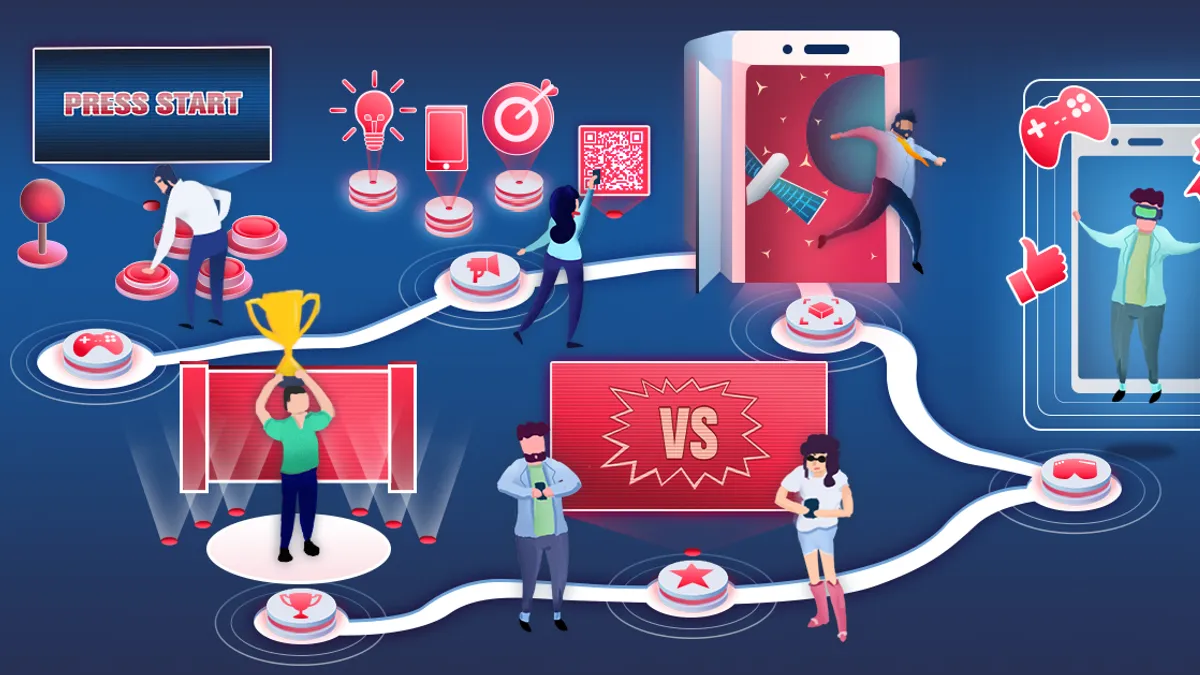We’re all familiar with gamification – from collecting points for rewards to hitting fitness targets set up and tracked by apps. Gamification adds fun and is often the driving force to behave in certain ways, leveraging our human instinct to achieve goals and win! Brands too are looking at this powerful application to deliver on objectives from positive brand engagement to influencing purchase intent. With 20 years of experience creating mobile games, Gameloft can effectively integrate brand objectives and gameplay to deliver fun and meaningful consumer experiences, so let’s talk about how you can apply gamification to your initiatives.
The Application of Gamification
Branding Efforts: Marketing and Advertising
-
Playable Ad Units: Digital advertising has come a long way from the days of the classic (but not-so-loved) pop-up ad. Today there are many ways to showcase your brand online, one of the most engaging and arguably, most entertaining digital ads available is the playable ad unit. This ad format integrates a brand’s objective in a compelling and interactive ad, complete with branding and a call-to-action. When done right, playables are fun and deliver a brand message effectively. A unique outcome for this ad is replay, where players opt-in, un-incentivized to play with a brand’s content simply because it’s entertaining. It’s the kind of engagement and positive attribution every brand wants to achieve through marketing. These game mechanics work for any brand from banking to food to fashion, as long as the audience is interacting with the brand message and that interaction ends with a clear and compelling call to action. The best part, playables can live anywhere across the digital ecosystem - in-app, brand websites, even digital Out-of-Home units!
-
Augmented Reality: Do you remember the summer when everyone was playing Pokémon Go? That AR technology, where the player and their movements are the controller, is available for brands to apply to their own offering, and it's gaining popularity across all industries. Today, we can explore luxury car features via Lexus’ AR app or save money with Ally Bank’s campaign, and everything in between. With AR, brands overlay their branding onto the real world in an immersive and engaging way that is powered by the consumers’ active involvement, reinforcing messaging and creating memorable brand experiences.
-
Native and In-Game Advertising: It makes sense that brands want to be where their audience is – and that is playing games! Games are the most popular form of entertainment and they boast one of the largest (2.5 billion strong), high value, and engaged audiences available. Native and in-game advertisements place your brand in front of players when they are in an active, positive state of mind and receptive to brand interactions.
Engage this audience with:
-
Incentivized In-app ads: Your brand can help level up the player experience through assistance when they need it most, providing in-game rewards/boosts in exchange for interaction with your branded content.
-
Interactive videos: Ensure players are engaged with your content with actionable prompts (tap, swipe, tilt, etc.) integrated directly into your existing video content.
-
Native Advertising: Be part of the actual game! Immerse players with your branded content within the game environment, like virtual billboards, branded avatars/cars/shops, and beyond.
Online Events: Gamification of Concerts to Conferences
With the rising popularity for virtual events comes the need to deliver real value to attendees and sponsors. There are all sorts of events going digital and seeing outstanding success - from Travis Scott’s concert in Fortnite to prominent conferences like Cannes, ComicCon, SXSW, and many more. Removing the in-person element means organizers face a new challenge – ensuring interaction and meaningful engagement for all.
Here too gamification has a place, supporting event objectives that drive desired actions. Game elements like missions, points, badges, leaderboards, etc., can be applied to drive activity. For example, an event can create “missions”, assign value for completion, recognize participation with a leaderboard, and reward “players” with real prizes. Beyond the event itself, gamification provides quantifiable data on what did and didn’t drive action; critical information to optimize future events. In the corporate world this data can be brought back to employers to show level of participation, a proof of value.
The Post-Covid World: A New Way to Engage
The application of gamification existed well before Covid-19, but now, in a world where people are less likely to interact in-person, sample, and even go into a brick and mortar business, it’s more important than ever to understand the value of gamification and how to apply it effectively. Gamification brings back meaningful engagement through game elements we know; leveraging hard-wired human desires to compete, win, get recognized, and earn rewards.
As different industries from entertainment to education begin to use gamification to meet objectives, we’ll see successes and failures, but the general trend will be increasingly sophisticated applications that effectively deliver results.






